WWII JAPANESE ARMY SAMURAI SWORD - SIGNED KANEKADO - #3 -
The following pictures illustrate a fine example of an older Katana blade mounted in the traditional
WWII fashion. The blade on this sword is in pristine condition and has an overall length of approximately
28 inches.

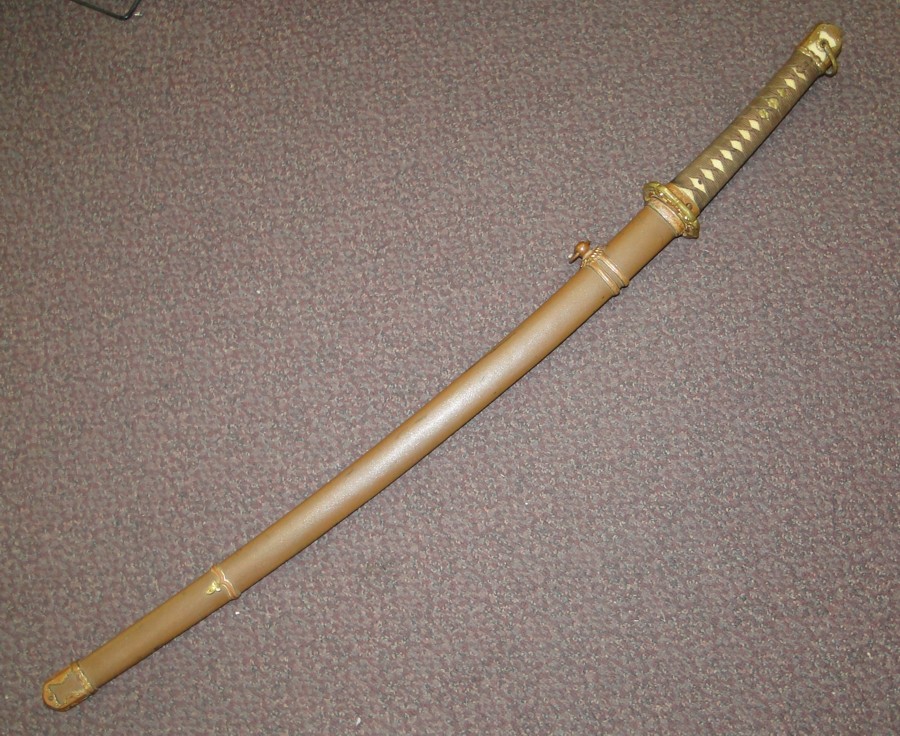


The handle of the sword has been removed in the pictures below. The signature of the maker is found on one side. The date has been carved on the
other side of the tang. The date is written using the Zodiac method.




|
The Samurai sword has a very rich history. The sword has been manufactured for several centuries and continues
to be produced today. The sword represented more than just a weapon. It was the soul of the Samurai warrior.
When attempting to identify the type of sword you have It is important to keep in mind that the fittings of
a sword (scabbard, handle, crossguard. etc.) may be identical from one sword to another. The reason why is
because during WWII the same fittings were used in all Army swords, Navy swords, etc. Armed forces are all
about uniformity. They strive to make everything the same.
This is the reason why a sword cannot be identified merely by its external appearance.
Understanding the different components that make up the Samurai sword is the first step in figuring out the
type of sword you have. That is the reason why we have created the
Understanding the Samurai sword section as a means to
provide a novice with the basic knowledge to start the path of determining the questions everyone has;
who made the sword, how old it is nad how much it is worth.
|
The picture on the left is the pommel (Kabutogane) of the sword. Notice the detail of the decorations
adorning the sword hanger.
The picture to the right depicts the (Menuki) which is a collection of three cherry blossom.
These blossoms are standard symbols of the Japanese army of WWII.
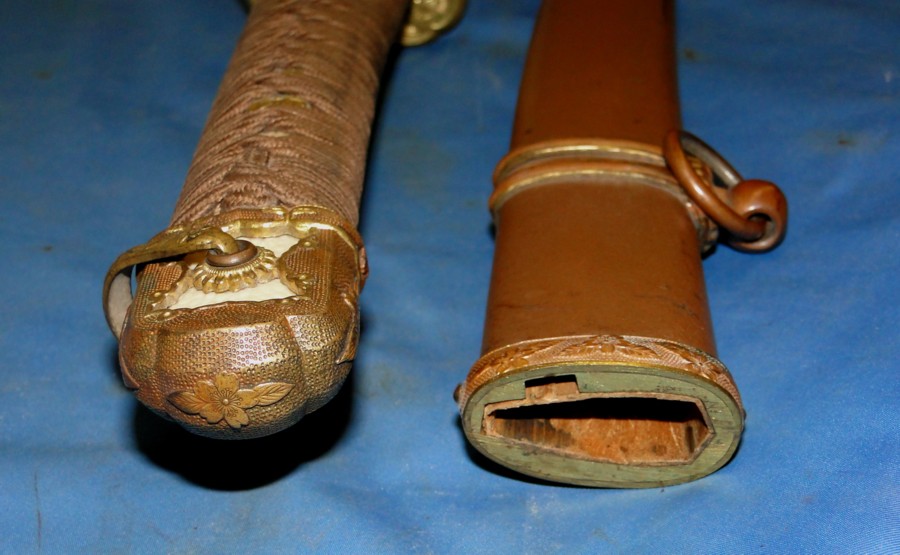

The pictures below are a clear illustration of how the sword was secured to the scabbard.
The tip of the locking mechanism tends to break when people force the sword out. Notice the
fine workmanship and and detail of the sword fittings.
The picture on the left shows the Habaki. Usually constructed from copper. Its main purpose
was to secure the sword once inside the scabbard. The blade fits loosely inside as to not be
scratched when the Samurai moved around.
A top and bottom view of the Tsuba (hand guard) can be seen. This is a solid design indicating a
later war manufacturing. The Tsuba has four Chrysanthemum flowers. All fittings on this sword
are standard to the WWII time period.

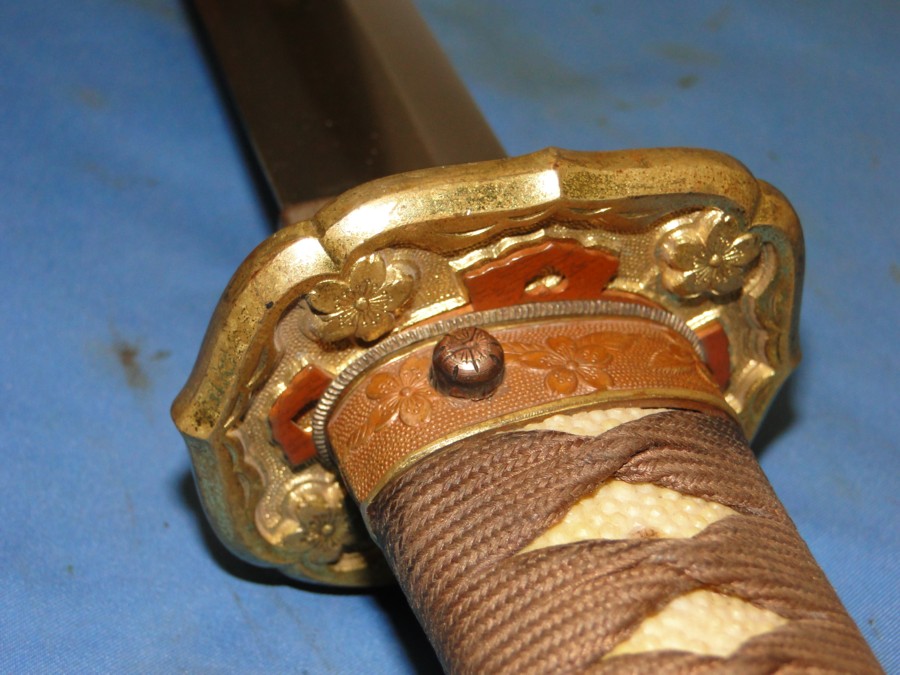
This is a top view of the scabbard. The whole to the left of the main opening is where the locking tab connected to
the body of the scabbard. The inside of the scabbard is lined with wood to provide a better fit and to protect the blade of the sword.
The tang of this sword is signed on both sides. These signatures often contained information such as dates,
family name, school name and the name of the maker.
The name of the maker/school is important because some of them are highly desirable. However, there is a problem
in determining the authenticity of the signature because in many cases they have been forged. Some of these
forgeries back to the 1700's. Some experts believe that up to 80% of the signatures may not be authentic.

|
This page is a recognition and identification guide for Samurai swords.
Multiple detailed photos of a specific sample are provided. Descriptions point
out clearly defined points that should be noted.
One of the most commonly asked questions is "How much is my Samurai Sword worth?".
A price guide is included here to address this question. The value of the swords is
reviewed over a period of several years. A trend can be observed. The present worth
of the edge weapons in the collector's market is illustrated.
This service is provided free of charge to the visitor/enthusiast courtesy of
MilitaryItems.com,
a company dedicated to the preservation of military history and to providing quality
military antiques and collectibles to museums, institutions and the general public.
|
|

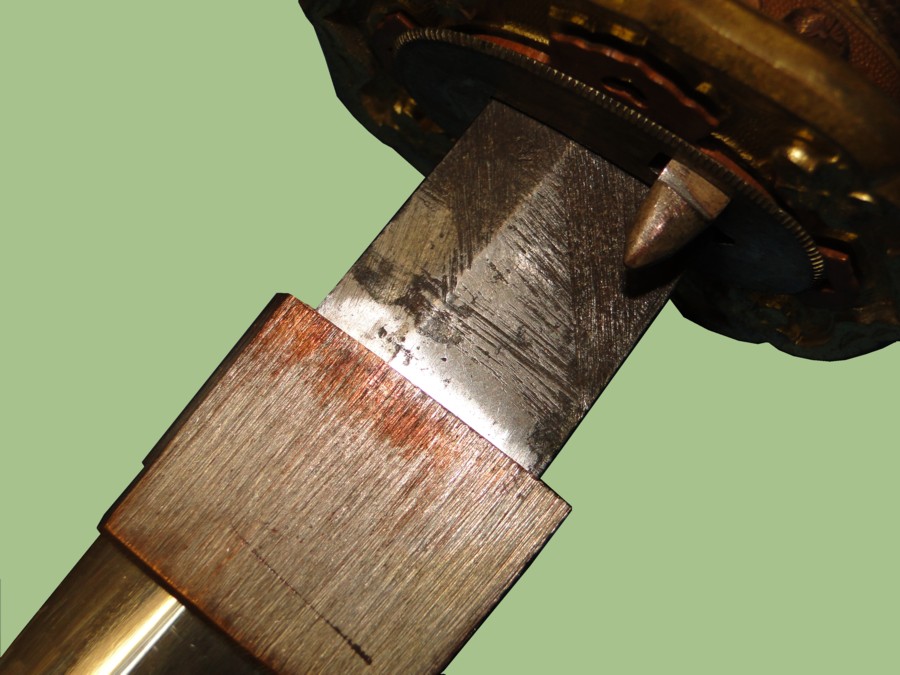
A closeup picture of the hand guard or Tsuba follows. This piece is painted gold and has a cherry blossom in each corner. The guard has an opening to allow for the locking mechanism to go
through. Also notice the washers on top of the guard.

The washers are removed from the hand guard. The Habaki is placed between the Tsuba and the
neck of the blade. The washers help secure the fittings.


Two different views of the date carved in the tang.


Two different views of the tip of the Samurai sword. The scabbard is also shown.


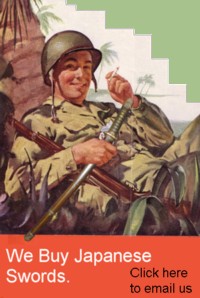
|
WE BUY JAPANESE SWORDS - All types of Japanese edge weapons. Whether it is a WWII era Samurai sword or an
older type of blade.
The process gets started by you sending us an
Email .
We will respond to your inquiry normally within 24 hours and in many cases much faster.
We can tell you what you have, what it is worth and how much we can pay you.
One sword or an entire collection -
Email Us .
|
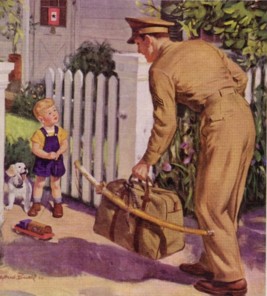 |
This picture shows the start of the tang. It also displays one side of the Habaki.

By the Numbers
It is next to impossible to determine the exact number of Samurai swords that were produced and issued to
Japanese soldiers during the war. However, thanks to the record keeping maintained by the US Armed Forces,
it is possible to estimate how many swords were actually shipped home.
 |
There were over 500,000 Samurai swords were brought back home as souvenirs from the war.
There are several caviats to this number.
|
 |
For example, some soldiers took souvenirs and shipped them home circumbenting the established process.
Some of the swords were brought back inside duffle bags without anyone knowing except for the soldier who
captured the sword. This fact would clearly affect the final count.
The number also does not account for swords that were taken by Allied soldiers from other countries.
Collecting Samurai swords
Collecting Samurai swords is a field that has been growing since the days the GI's rummaged around Asia
bringing back military souvenirs. Japanese soldiers carried many of these swords when they went to
battle. Once the soldier was killed or captured, the Americans would take the edge weapons as war trophies.
Eventually all these pieces came back to the United States where military history enthusiasts began to collect them.
 |
In trying to determine if you should collect Samurai swords there are certain factors that should be
considered.
The adjacent table outlines some of the advantages and disadvantages of collecting the Samurai swords.
|
 |
This Samurai Sword may be currently reproduced.
It is becoming more difficult to be able to tell the fake ones from the real ones because
the quality of the reproductions is improving. The collector must become familiarized with
the construction style and materials employed in the manufacturing of this item.
Attention to the details is critical in order to be able to determine the authenticity of
the collectible.
If you have an interest is seeing other Japanese Samurai swords, you can do so by going to our
Japanese Samurai Swords Price Guide
identification guide. Where we cover Samurai swords from all periods.
| 




